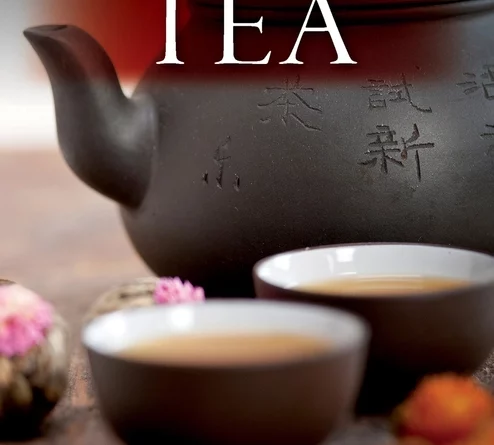
The Story of Tea
Ever wondered how for thousands of years the simple cup of tea has become the world’s most consumed beverage after water? In this informative and entertaining episode, Rosie Lovell uncovers the history of tea – how the drink spread from China to capture the taste of the world.
Together with fellow travellers from around the world, Rosie ventures on a voyage to discover the phenomena behind tea and tea drinking. Tea is grown and produced in more than 40 countries worldwide, but back in the 17th century tea had to be imported at great cost and effort from China.
Rosie Lovell begins her journey at The Cutty Sark, the world’s last surviving tea clipper. From 1870-1878 The Cutty Sark made 8 successful epic voyages to China in pursuit of tea. In South East China, chef Peter Gordon visits the capital of the Fujian tea market where this bounty had brought the Cantonese region prosperity, spirituality and bloodshed. Peter Gordon discovers the medicinal properties associated with tea and enjoys the art of the Chinese tea ceremony.
We introduce the origins of how tea was first discovered in China in 2723 BC. Rosie joins tea specialist Mark Nicholls for some tea tasting and gets an insight into some of the popular Chinese white and green teas, which are as popular today as they were when first discovered.
Meanwhile, Chef Bobby Chinn is in the Chinese Province of Yunnan where he experiences the ritual of one of the most expensive teas in the world, the Pura tea at $3000 a gram! By the 13th century tea had become very popular in Japan amongst scholars and philosophers. Chef Merrilees Parker travels to Kyoto and experiences a traditional Japanese Tea ceremony Sado. Rosie Lovell finds out that the rituals of the tea ceremony also became very popular in Taiwan amongst artists and Monks who developed this tea drinking habit into an art form and philosophy.
Stephen Twining of Twining Tea gives an account on Britain’s early obsession with tea. Rosie finds out how tea became the most expensive drink only affordable by the rich to the cheapest beverage for the masses. Rosie meets Dr. Robert Blyth curator at the Maritime museum in London who explains the role of ‘The East India Company’ in keeping up with the demand for tea in Britain. He tells her how the British were so determined to get their hands on a cup of tea that they even sold large quantities of Opium to the Chinese, leading to a breakdown of trade leading to the Opium Wars! As demand for tea continued to increase the British had to look elsewhere for tea. Since the British owned India they discovered that tea could be grown at the foothills of the Himalayas and over the centuries Indian tea has become even more popular than Chinese tea.
To find out more about how tea is grown in Asia, traveller Holly Morris visits the tea plantations in Darjeeling India and the Zareen tea estate in Bangladesh, Megan McMormick heads to the tea hills in Sri Lanka and Merrilees Parker discovers the art of tea picking in Malaysia. Meanwhile back in London Rosie Lovell enjoys some Indian tea tasting from Darjeeling and Assam with Mark Nicholls. Rosie introduces the popularity of afternoon tea and high tea.
The British also introduced tea to their colonies where nowadays-local communities have developed their own ways of enjoying this delicious hot beverage. Merrilees Parker enjoys the afternoon tea in Malaysia.
Bobby Chinn is in Amritsar, India to find out how the local Sikh communities enjoy their morning tea. In Burma the use of condensed milk is an all time favourite with the locals as Megan McMormick discovers. Back in Bangladesh Holly Morris samples the incredibly unique 7-layered tea, whilst Ben O’Donoghue enjoys a nice cup of mint tea in Morocco.
In multicultural London Rosie visits an Egyptian Tea house where they serve all types of Middle Eastern teas and she also samples a traditional Persian tea made in a Samova. The programme concludes with the future of tea as Rosie meets brothers Nadeem and Jameel Lalani who are leading the way in which fine teas are being regarded in the same manner as fine wines.
More information:
Study Guide: A Short History of Tea
Credits
THE STORY OF… TEA
CREDITS
*
presenters
ROSIE LOVELL
PETER GORDON
BOBBY CHINN
MERILEES PARKER
HOLLY MORRIS
MEGAN MCCORMICK
BEN O’DONAGHUE
*
with thanks to
LALANI & CO LONDON
NATIONAL MARITIME MUSEUM, LONDON
Twinings Tea
THE WALDORF HILTON HOTEL, LONDON
BROWN’S HOTEL, LONDON
*
titles and graphics
MARTINA DEO
*
camera
MICHAEL SUNDERLAND
sound
SIMON BUCK
MARTIN EVANSON
*
facilities
GUILTFREE POST
dubbing mixer
CHRIS MORRIS
*
editor
MICHAEL SUNDERLAND
*
title music by
COLIN WINSTON FLETCHER
music by
COLIN WINSTON FLETCHER
JON WYGENS
MICHAEL CONN
MAKO SAKAMOTO & JESPER MATTSON
MALCOLM LAWS & NANITA DESAI
BOB LOCKE & TIM NORFOLK
NINA MILES
PAUL MOUNSEY
IAN RITCHIE
SIMON HILL
*
post production coordinator
MICHAEL SUNDERLAND
post production assistant
THOMAS ARNAL
*
production accountant
HELEN KHINE
production manager
MEL MOORE
*
segment directors
LISA DUPENOIS
STEPHEN LENNHOFF
JASMINE NG KIN KIA
CHRIS HOWE
DOMINIC ALLAN
PAUL WATSON
KATE KINNAMONT
PETER MACPHERSON
EWEN THOMSON
produced and directed by
NAVIN THAPAR
*
executive producer
IAN CROSS
*
Produced by Pilot Film and TV Productions for:
Discovery Networks Asia
Travel Channel International
Voyage
American Public Television
*
©Pilot Productions MMXIII
